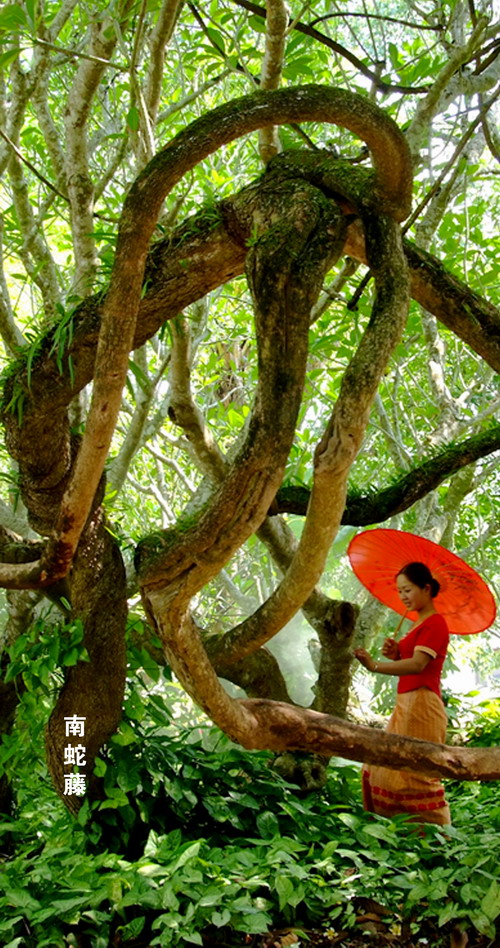Oriental bittersweet is a perennial deciduous, climbing, woody vine that can grow to lengths of 60 ft. (18.3 m) and up to 4 in. (10 cm.) in diameter. The striated bark is brown to dark brown. The smooth glabrous twigs can range from light gray to dark brown in color. The woody vines of oriental bittersweet may smother and strangle many tall trees.
There are two large woody vines of oriental bittersweet in XTBG, which stems are about 20 cm in diameter. They are twining and arbor forming, with many alternate drooping branches growing at angles and eventually becoming straight. They climb to tall tree crowns.

The twining and arbor forming large woody vines of oriental bittersweet in XTBG.
Celastrus orbiculatus :http://wiki.bugwood.org/Celastrus_orbiculatus
- Appearance
- Oriental bittersweet is a perennial deciduous, climbing, woody vine that can grow to lengths of 60 ft. (18.3 m) and up to 4 in. (10 cm.) in diameter. The striated bark is brown to dark brown. The smooth glabrous twigs can range from light gray to dark brown in color.
- Foliage
- The alternate, elliptical to circular leaves are light green in color and 2-5 in. (5-13 cm) long.
- Flowers
- Small, inconspicuous, axillary, greenish-white flowers bloom from May to early June. Oriental bittersweet closely resembles American bittersweet (Celastrus scandens). The main difference: American bittersweet has flowers and fruits at the ends of branches; Oriental bittersweet has flowers in the axils of the leaves.
- Fruit
- The small globose fruits are green when young; ripen to yellow; then split to reveal showy, scarlet berries that persist into winter.
- Ecological Threat
- Oriental bittersweet is commonly found in old home sites, fields, and road edges. The fast growing vines can cover, shade and outcompete other vegetation. It can even girdle and kill large trees. Birds and other wildlife eat the fruit, thus distributing the seeds. It hybridizes with American bittersweet, potentially leading to loss of genetic identity for the native species. It was introduced from China around 1860 as an ornamental.
|

